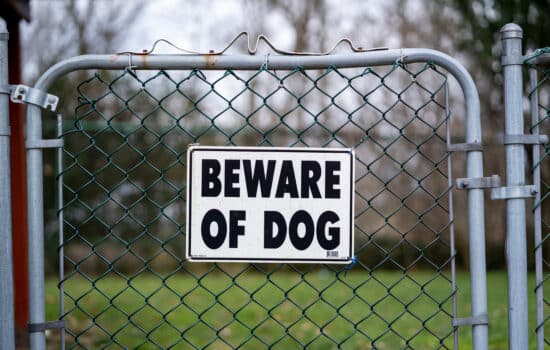 By: Raymond C. Pelote ∣Partner
By: Raymond C. Pelote ∣Partner
I recently argued a Motion for Summary Judgment in a Chapter 7 bankruptcy case in Massachusetts on an issue of first impression within the First Circuit. Although many other jurisdictions have decided this issue, the First Circuit has yet to entertain it. The issue is whether a Chapter 7 debtor can “strip-off” an unsecured mortgage lien in a Chapter 7 bankruptcy case.
In my case, the debtor who filed a Chapter 7 no asset bankruptcy case sought to void my client’s unsecured third mortgage lien. In her schedules, she listed our client as a secured creditor. In the priority scheme, our client held a second and third mortgage lien on the debtor’s property. Another creditor held a first mortgage lien on the property. The amounts due on the first mortgage lien and our client’s second mortgage lien exceeded the fair market value of the debtor’s property leaving our client’s third mortgage lien wholly unsecured. As a result, the debtor sought to “strip-off” our client’s third mortgage lien because it was wholly unsecured.
The term “strip-off” is a novel term employed by our bankruptcy courts. It merely means voiding a mortgage lien on property when the mortgage has been deemed unsecured. Before, a claim may be deemed secured or unsecured, there has to be a determination of whether a claim is allowed or disallowed. The mechanism for such determination is a claims allowance process. A claims allowance process is a process by which creditors, when instructed by the bankruptcy court, file proofs of claim informing the bankruptcy court and bankruptcy trustee as to what amounts the debtor owes a creditor. Once proofs of claim are filed by all creditors of the debtor, the bankruptcy trustee and debtor have the ability to object to the proofs of claim triggering the bankruptcy court to make a determination of whether or not a particular proof of claim may be allowed or disallowed. If no objection is filed by the trustee or the debtor, the proof of claim filed by a creditor is deemed allowed. During the process by which a claim is deemed allowed or disallowed, a claim is also deemed secured or unsecured or a combination of both. A claim deemed secured in part and unsecured in part is called a bifurcated claim.
Most Chapter 7 bankruptcy cases are no asset cases in which case the bankruptcy court instructs creditors not to file proofs of claim unless instructed by the bankruptcy court to do so. Because the bankruptcy court instructs creditors not to file proofs of claim, there is no claims allowance process by which a determination can be made on whether a claim is allowed or disallowed and secured or unsecured, in whole or in part.
In any event, the debtor sought to employ 11 U.S.C. Section 506(a)(1) and (d). Section 506 (a)(1) states that “[a]n allowed claim of a creditor secured by a lien on property in which the estate has an interest,…, is a secured claim to the extent of the value of such creditor’s interest in the estate’s interest in such property,…, as the case may be, and is an unsecured claim to the extent that the value of such creditor’s interest…is less than the amount of such allowed claim. Such value shall be determined in light of the purpose of the valuation and of the proposed disposition or use of such property, and in conjunction with any hearing on such disposition or use or on a plan affecting such creditor’s interest.” Section 506(d) states that “[t]o the extent that a lien secures a claim against a debtor that is not an allowed secured claim, such lien is void….”
I argued, before the bankruptcy court, that Section 506(a)(1) is inapplicable to the debtor’s case as the first three words of Section 506(a)(1) dictates that the claim that she is seeking to avoid must be “[a]n allowed claim” and because there has been no claims allowance process in her case, largely because she filed a Chapter 7 no asset bankruptcy, our client’s third mortgage lien could not be voided. Moreover, Section 506(d)(2) provides an exception for creditors whose claims have been deemed disallowed solely for the failure to file a proof of claim. Section 506(d)(2) states that “[t]o the extent that a lien secures a claim against a debtor that is not an allowed secured claim, such lien is void, unless such claim is not an allowed secured claim due only to the failure of any entity to file a proof of claim under Section 501 of this title.” This exception put in place by Congress seems to indicate that where there has been no claims allowance process to determine whether or not a claim is deemed allowed or disallowed, a debtor may not void a claim. The Bankruptcy Court (Hoffman, J.) agreed that the lack of a claims allowance process prevents a Chapter 7 debtor, in a no asset case, from voiding a wholly unsecured mortgage lien on property.
This ruling is important in that it provides some direction to future creditors, in Chapter 7 no asset bankruptcy cases, who are faced with a debtor who is seeking to “strip-off” a creditor’s mortgage lien in bankruptcy. While Judge Hoffman’s ruling does not set precedence, it is persuasive if and when this issue comes before another bankruptcy Judge in our circuit.











